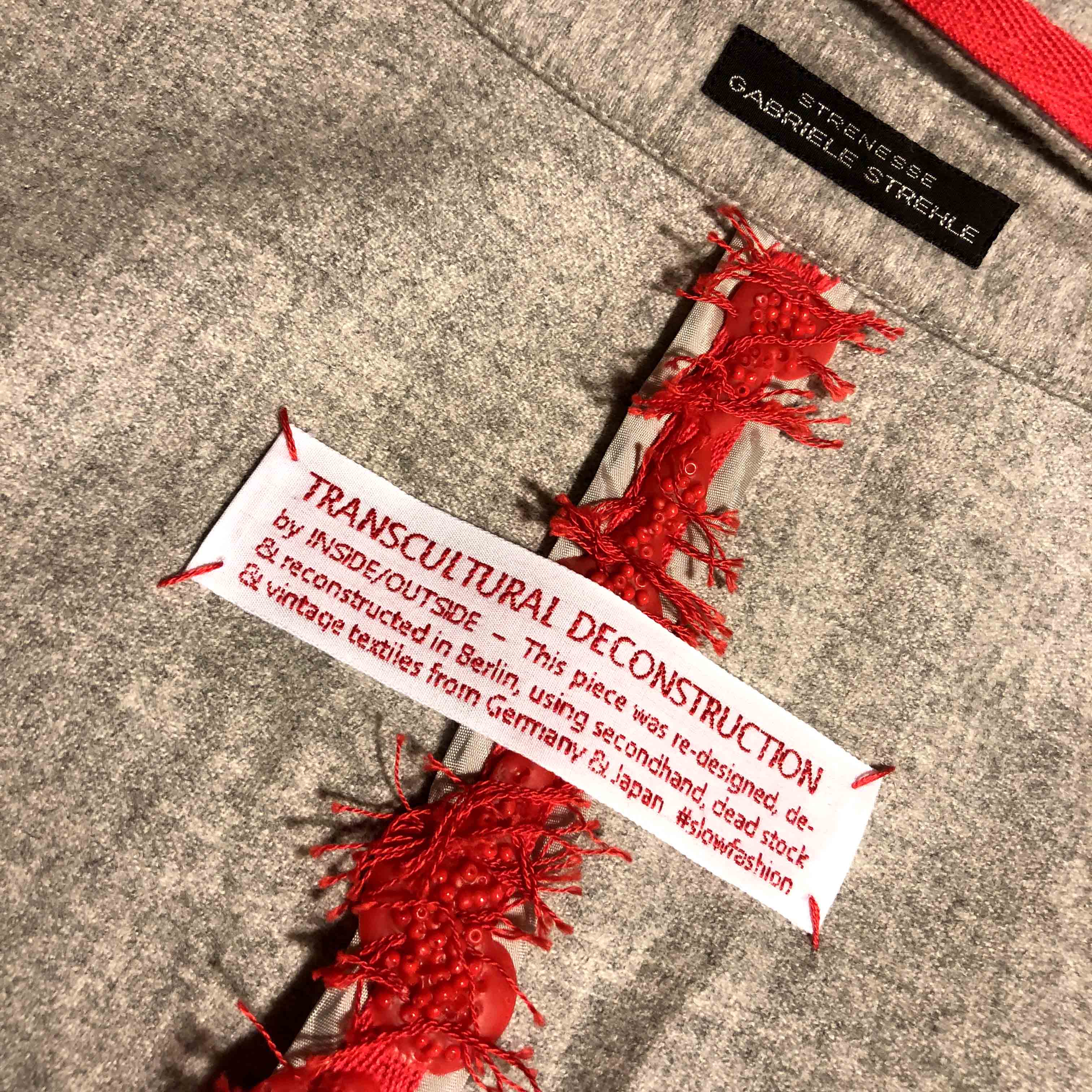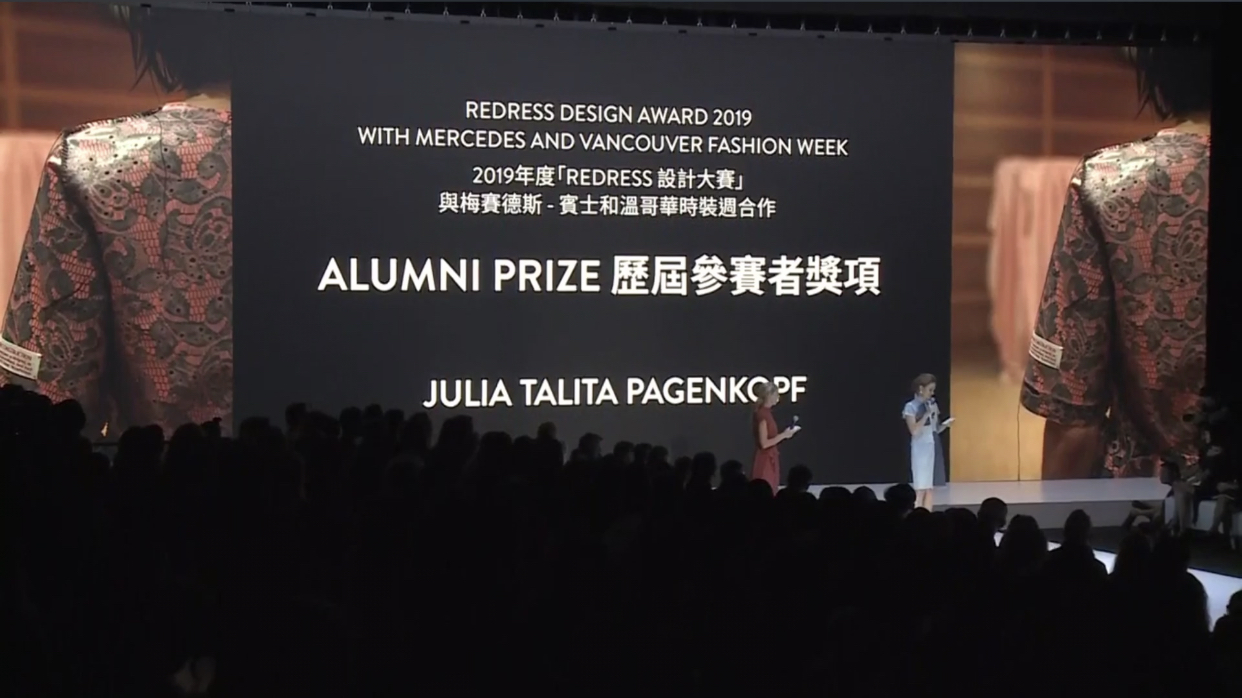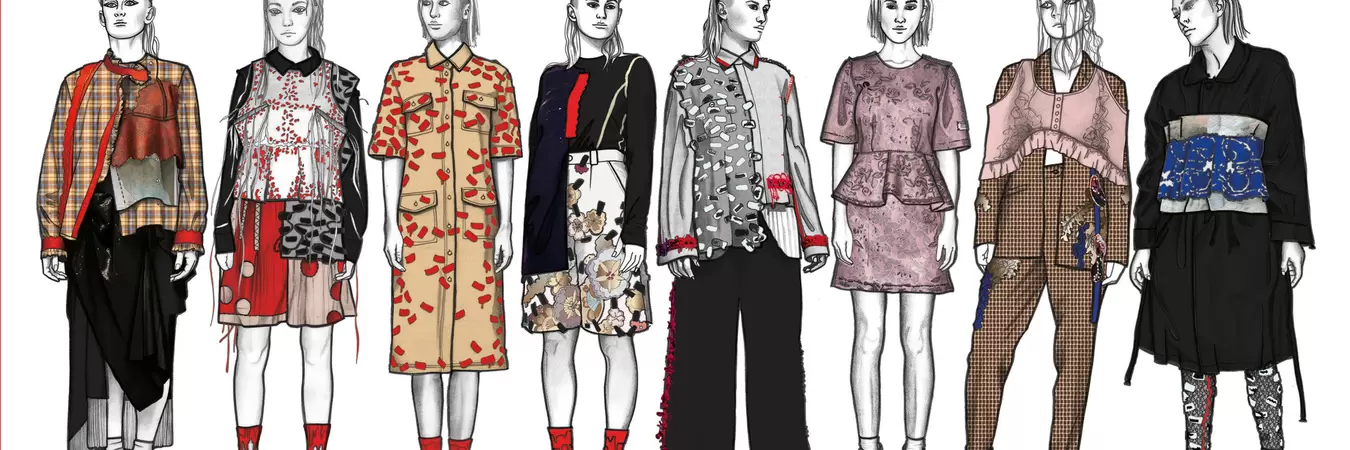Exclusive: Julia Pagenkopf on her Vancouver fashion week S/S2020, sustainability and future plans
Summary
She also reveals her future plans to make her brand increasingly reachable to the broader audience and speaks about her radically sustainable design approach. We would like to thank Julia for her detailed response that will help our readers to see through her journey and for passionately sharing her future visions related to her brand.
Check out her detailed responses on our questions:
F-trend- When did you realize you wanted to become a fashion designer?

Julia- I wanted to become a psychologist as a child, but couldn’t stop creating things with my hands: painting, drawing and building objects were my favorite things to do. It always fulfilled me deeply while calming my mind. When I had to decide what to study after high school, I thought about combining psychology and design in a way. It was clear to me that I like to create something that people will „use“ in their life and that will support them in a psychological way. This is how I decided to become a fashion designer, as clothing can have such a high influence on the way people feel about themselves and their surroundings.
Julia, please tell us more about your Vancouver fashion week collection, I meant how you started working on it. How you got inspired for the S/S 2020 season collection?

Julia- The initial concept for my collection Transcultural Deconstruction started to unfold itself when I came back to Germany after living in Japan for a year. During my studies in Japan I learned about the concept of Wabi Sabi in which imperfection and decay are celebrated. While deep diving into Japanese culture I discovered that many traditional Kimonos and Obi sashes are discarded. I thus wanted to develop a concept in which these textiles could be appreciated once more, mixed with secondhand and vintage clothing from Germany.
By using discarded post-consumer garments only, I wanted to establish a new radically sustainable way of creating clothes, while slowing down the flow of textiles in the garment industry. In my point of view it is not enough to use „sustainable“ textiles, like organic cotton or recycled polyester, to create a collection. I regard it as unnecessary to produce new textiles for collections, while millions of unsold garments are landing in landfills, overproduction fosters overconsumption. We have enough „stuff" and until we find efficient ways to recycle clothing-to-clothing, instead of down-cycling textiles, I don’t want to „add“ more to the pile.
F-trend- How do you define your collection- Transcultural Deconstruction. What are the key cultural elements from Germany and Japan you mixed in your collection?

In Transcultural Deconstruction, the cultures of Japan and Germany are merged together, in order to increase the understanding between East and West. I felt deeply transformed by living in Japan, my westernized design aesthetics started to merge with eastern concepts inspired by buddhism, taoism, shintoism and of course the concept of Wabi-Sabi which finds its origin in these world views. Speaking in a more concrete way this means, German utilitarian inspired garments by mainly traditional German fashion houses meet floral hand-painted silks of traditionally handcrafted Kimonos and intricate brocade silk of Obi sashes. Plain, straight forward cuts meet drapey silhouettes, an earthy color palette is mixed with pastel colors inspired by Japanese „kawaii“ pop culture.
F-trend- What colors will dominate your collection for the next AW season's runway?
Julia- One thing is for sure – I will continue to use earthy tones like brown, beige and off-white as a base, as I focus on re-using (undyed) natural fibers like wool, raw silk and cotton. Warm, reddish brown shades will be introduced and I’d like to break the homogenous look up with a few pop accents. It’s always an organic approach in which the direction unfolds itself while I am in the process of „making“ and „creating“. Luckily, I don’t have any seasonal time pressure as I work entirely seasonless. It’s most likely that my color scheme will slowly transform from the current „edition“ of designs, but the exact destination isn’t clear yet.
F-trend- What are your future goals and plans?
Julia- I started INSIDE/OUTSIDE Studio beginning of this year by showing my debut collection at Berlin Fashion Week, while being a freelance designer and stylist for different brands and also building up a clothing re-selling business. My goal is to slowly and organically grow these areas, as they go hand in hand. All the garments and textiles that are not suitable for direct re-selling get re-designed at INSIDE/OUTSIDE Studio. With my work as a freelance designer and stylist, I financially support and grow my businesses independently. This allows me to make no compromises and thoughtfully take the time needed at each step of the process. It’s my personal "Slow Fashion“ approach and I love it this way!
F-trend- What were your expectations from the #VFW S/S 2020 runway?

Julia- After winning the Alumni Prize of the Redress Design Award this September I was very excited not only to show my collection to a new, international audience but also to get to know the vibrant city of Vancouver for the first time. I expected to meet inspiring designers from all over the world and can confirm that #VFW provides a great chance to make new connections within the industry. The Vancouver Fashion Week founder and producer Jamal Abdourahman and his professional team made the preparation time very smooth, as well as the amazing Redress team and of course my sponsor Mercedes-Benz Hong Kong.
F-trend- Describe the theme of your collection at #VFAW20?
Julia- A-The main theme of my next edition of designs will still be about „radical sustainability“ by only re-using, re-designing and re-appreciating clothing and textiles that have already been worn or used and are now discarded. My debut collection Transcultural Deconstruction was a lot about freely expressing myself in a very creative way and exploring different re-design techniques without limiting myself with too many thoughts about scalability. For the next „edition“ of designs, my approach will shift from the focus on intricate one-of-a-kind pieces to more replicable design ideas. In addition to very individual pieces for special occasions, I want to create clothes people can wear on a daily basis with scalability in mind.
F-trend- We see you are inspired by the Japanese art and culture, also your S/S 2020 presentation resembles our fashion forecast "The Imperfectionist" inspired by Wabi-Sabi. So how you define im-perfectionism?
Julia-The theme of imperfection lies indeed at the core of my design practice for INSIDE/OUTSIDE Studio, by only re-using existing secondhand, vintage garments, used textiles or unsellable deadstock materials. Many of these textiles are aged, have stains, holes and other imperfections that occur after years of wear and tear. Especially my natural textile sources, like the Japanese Kimono silks I am using, show their age.
I am in love with these imperfections as they are so very „real“, there is nothing fake or superficial about them. By putting these imperfections into the spotlight instead of hiding them, I want to give the user the chance to establish the same relationship towards their own imperfections. Inspire the wearer to courageously showing their shortcomings instead of hiding them under a perfect facade, which I find would be anyway very boring.
F-trend- Are you making your brand ready for sustainable fashion? As a designer do you think sustainable fashion will be not limited to rich only? And how you could make it more reachable to nonaffluent customers?
Julia- My brand is based on the principles of radical sustainability at its core, as this is the only way we can step into the future without further using up the resources mother nature offers and by protecting the environment and people instead. I don’t think sustainable fashion is limited to rich people, as the most sustainable way of approaching fashion isn’t expensive: wearing one's clothes for 9 to 12 months longer than you would normally do, has actually the most positive impact on the environmental footprint of a garment.
Buying secondhand is often as cheap as fast fashion while the quality is most likely higher and the style definitely more unique. Repairing, mending and re-designing clothes are great sustainable options that aren’t expensive, too. In order to help to make the „use“ of clothing more sustainable without excluding anyone the governments of all nations are asked to provide support, though.
For example by reducing taxes for secondhand garments and for sustainable fashion in general. Also by financing repair and re-design fashion clinics, offer sewing and mending workshops at schools and supporting small sustainable businesses to grow and scale-up.
F-trend- How do you want people to feel when they wear your designs?
Julia- I want people who wear my designs to feel proud to be themselves while celebrating their unique imperfections without feeling ashamed or hold back. I want the wearer to show their true „inside“ on the „outside“ and feel comfortable while doing so.
F-trend- Why you have selected your Studio/brand name as Inside/outside.
Julia- Our brand name INSIDE/OUTSIDE Studio refers to our approach of using deconstruction as a technique and literally turning garments inside out during the re-design process to show their core, soul and intrinsic value. It is also a hint towards our attitude of not being afraid to show what’s inside on the outside.
F-trend- Who are your key famous buyers- and who you target your brands like millennials, Genz or 40+?
Julia- A longterm goal would be to sell in the concept store Dover Street Market in Tokyo. I don’t target specific age groups, I target humans who crave expressing their true personality in a radically sustainable way.
F-trend- As a designer for whom you want to create your collection- any celebrity?
Julia- I don’t usually have any celebrities in mind when working on my designs but there a for sure a few I would love to see in my clothes. As I play a lot with mixing masculine and feminine elements in my clothes I would be honored to design a custom suit for Kristen Stewart, a cool shirt for Tasya van Ree or a deconstructed robe for Tilda Swinton.
F-trend- Who are your favorite designers?
Julia- It’s probably not a big surprise, but I am a huge fan of a few Japanese brands… especially Toga, Sacai, Kolor, Undercover and of course everything Comme des Garçons.
F-trend- May I know how you define Radical Sustainability?
Julia- For us working in a radically sustainable way means only re-using materials that already exist instead of producing new textiles. This includes secondhand garments, vintage clothing and dead-stock textiles that would otherwise go to landfill – to instantly reduce the flow of materials within the fashion sector. Like this, we do not need to produce new materials and thus can save a lot of resources and energy while reducing the carbon footprint of our production.
We see a trend of brands replacing a part of their used fibers with recycled fibers or creating garments that are supposed to be recyclable at the end of their lifecycle. It is an approach in the right direction, but not effective enough for our standards, as it is relying on improving the recycling facilities until we don’t have to downcycle garments into less valuable materials anymore. At the same time, we would like to challenge our current consumption model which encourages consumers to indulge in overconsumption and fosters a throwaway mindset. Instead, we want to increase awareness of slow fashion.
F-trend- As you have described your next collection will focus on the intricate one-of-a-kind work- may you open a little bit more about how you are planning to achieve it? Through embroidery or cut detailing. As F-trend's AW 21/22 forecast also predicts consumers are looking to indulge in craftwork, so would your collection might be a glimpse of craftsmanship?
Julia- The recent edition of designs contains a lot of craftsmanship – different couture techniques including embroidery, appliqué and handpainted latex prints. While these techniques will carry over into the next edition of designs in some parts, the focus will shift away from it, to increase the scalability of the designs. My next edition of design will be a bit less focus on craftsmanship.
Thanks so much for your interest in my work and for taking the time to write this article. I appreciate it! And thanks for your patience of course.
F-trend: Thank you, Julia Talita Pagenkopf, for sharing your insight and we wish you the best of luck for your future endeavor. It was great speaking to you for a detailed discussion.

